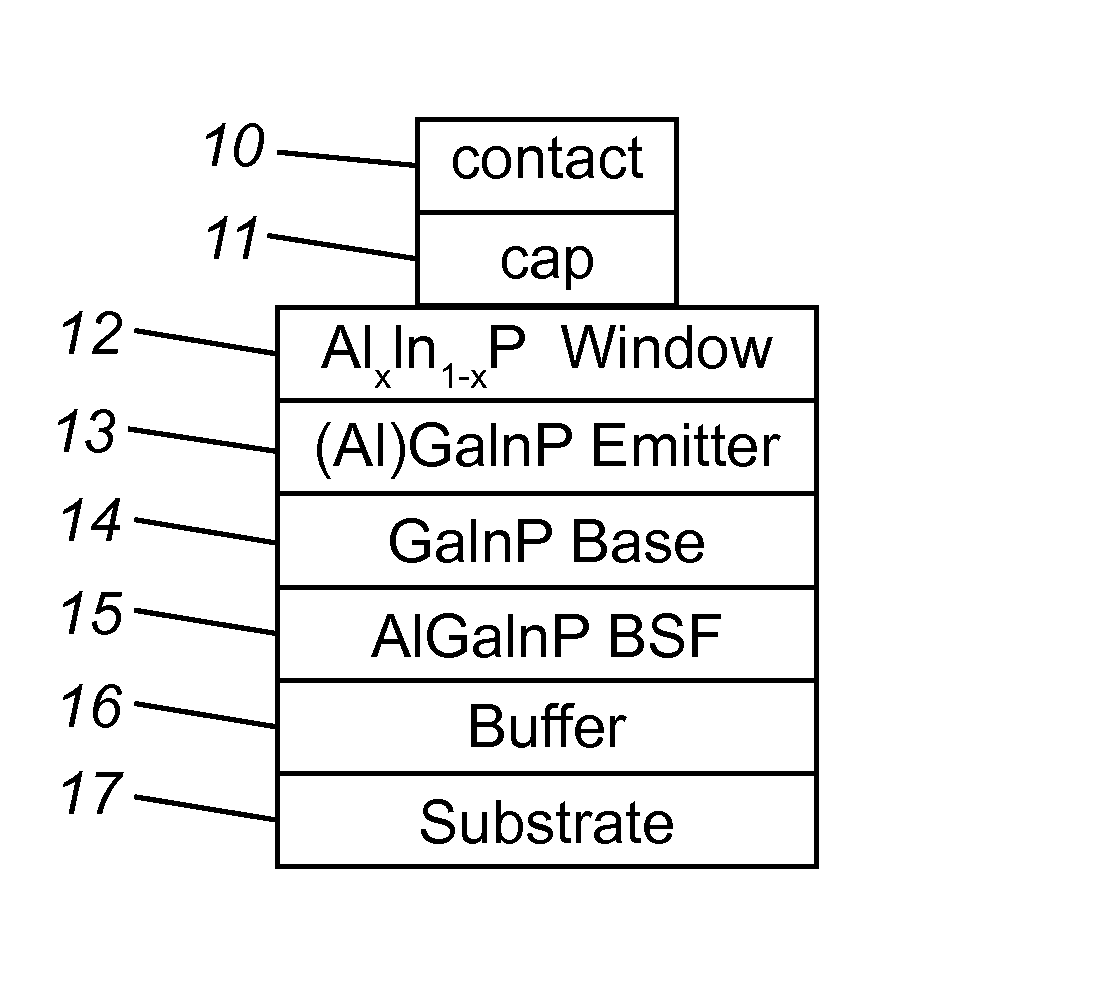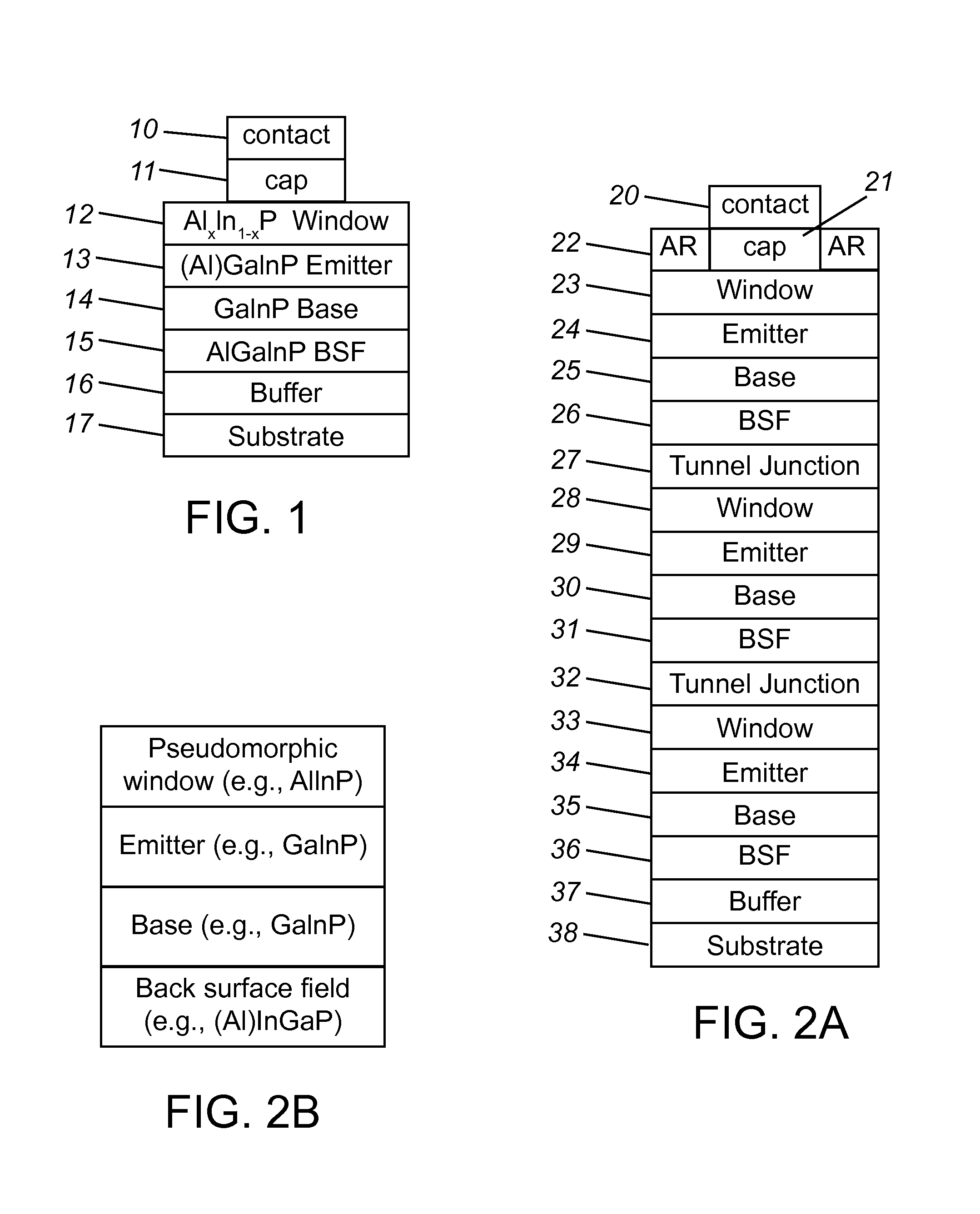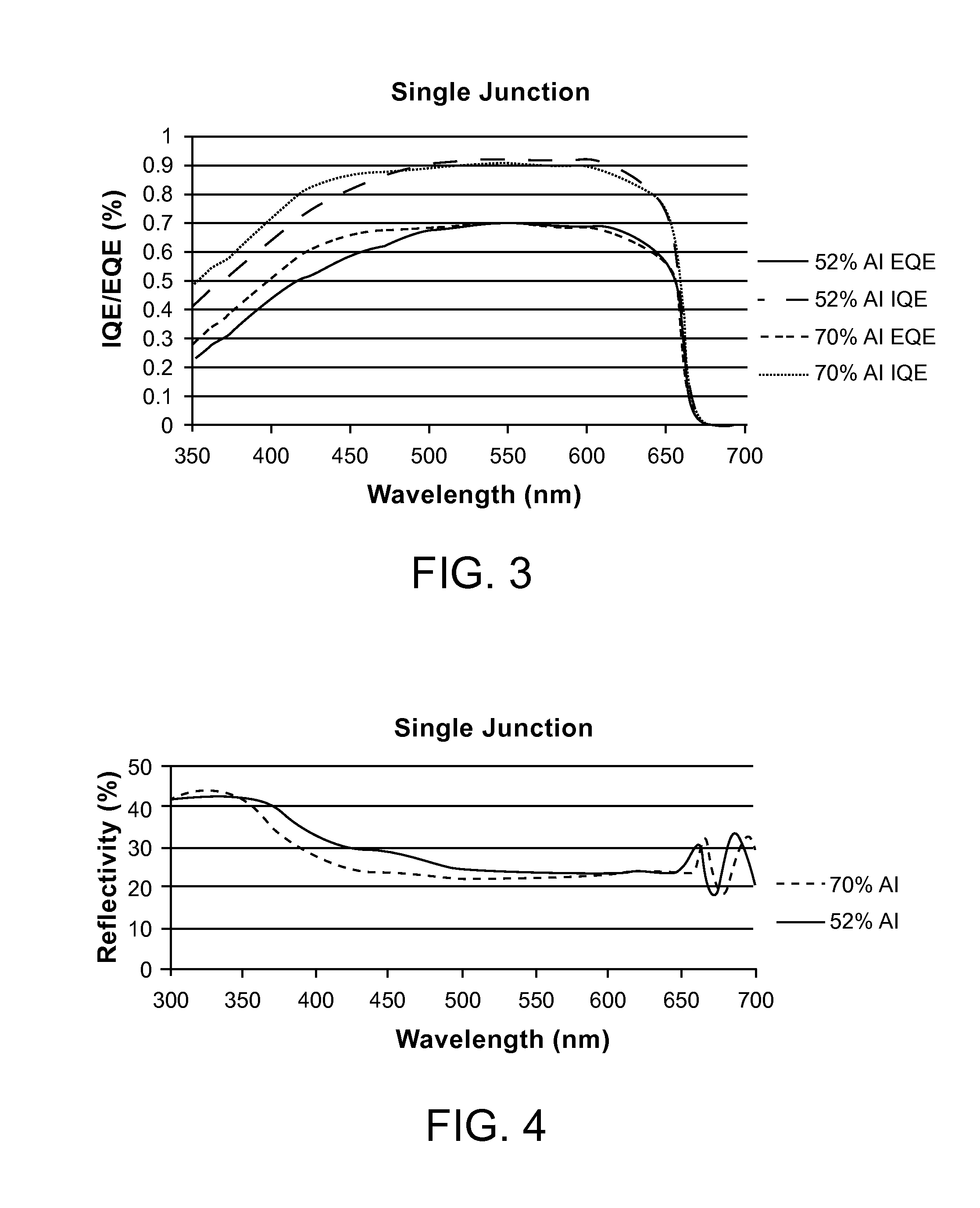Pseudomorphic window layer for multijunction solar cells
a solar cell and window layer technology, applied in the field of photovoltaic solar cells, can solve the problems of low efficiency photocarrier collection, large loss of solar cell window layer, and inability to collect high efficiency, etc., to increase the current generation of solar cell, improve the efficiency of photovoltaic cells, and improve the effect of light transmission
- Summary
- Abstract
- Description
- Claims
- Application Information
AI Technical Summary
Benefits of technology
Problems solved by technology
Method used
Image
Examples
Embodiment Construction
[0030]According to the invention, a photovoltaic cell having one or more subcells is provided, wherein at least one of the subcells has a pseudomorphic window layer that has an intrinsic material lattice constant that differs by at least 1% from the adjacent emitter layer of the subcell. The window layer is on the order of between 15-60 nm in thickness. The window layer has a higher band gap than materials or compositions that have substantially the same intrinsic material lattice constant as the adjacent emitter layer. Having an intrinsic material lattice constant that differs by at least 1% from the adjacent emitter layer, rather than a smaller amount, maximizes the increase in band gap in the window layer. Higher band gaps are desirable because they produce a larger increase in solar cell efficiency, by reducing the fraction of the solar spectrum that can be absorbed by the window layer.
[0031]As an example, FIG. 1 shows a schematic cross-section of a photovoltaic cell with one su...
PUM
 Login to View More
Login to View More Abstract
Description
Claims
Application Information
 Login to View More
Login to View More - R&D
- Intellectual Property
- Life Sciences
- Materials
- Tech Scout
- Unparalleled Data Quality
- Higher Quality Content
- 60% Fewer Hallucinations
Browse by: Latest US Patents, China's latest patents, Technical Efficacy Thesaurus, Application Domain, Technology Topic, Popular Technical Reports.
© 2025 PatSnap. All rights reserved.Legal|Privacy policy|Modern Slavery Act Transparency Statement|Sitemap|About US| Contact US: help@patsnap.com



